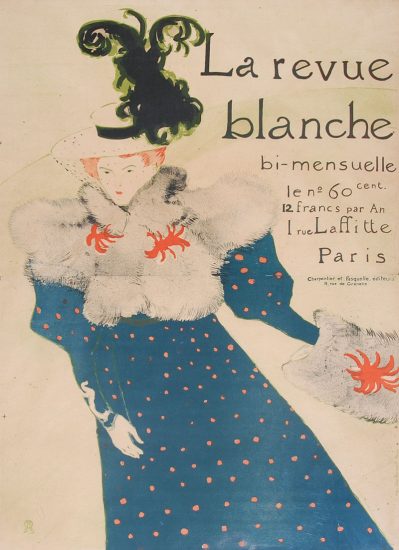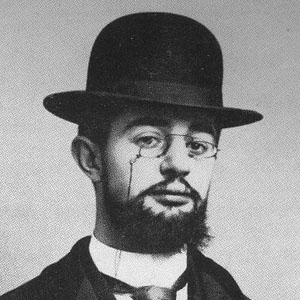Mental and Psychical Conditions vs. Creativity: How much influence do they exert over an artist?
A recent article I read titled Japanese Scientist Says Vincent van Gogh Was Colorblind — But Does it Matter? discusses the possibility that Van Gogh was colorblind which was the reason for his use of bright, brash color choices in his artwork. The author of the article holds steady in the belief that “To assume that the painter’s provocative artistic choices were simply the result of a medical condition is to completely disregard his own creativity.” This got me to thinking about artists and how their physical and/or mental condition may or may not influence their creativity.

What we do know about Van Gogh is that he was manic depressive, as well as epileptic. A brain disorder that causes unusual changes in the person’s mood, energy, and ability to function, manic depressive people have a hard time thinking and focusing, isolate themselves, experience hallucinations, and become involved with mind altering substances to help them cope. In Van Gogh’s case he drank absinthe, and suffered from those symptoms as well as hypergraphia, sunstroke, and possibly lead poisoning. The artist was institutionalized because of his manic depression and, later on, committed suicide at the age of 37.
It is often believed that because Van Gogh did use lead based paints he suffered from lead poisoning from nibbling at paint chips. It was also noted by his physician that during his attacks Van Gogh tried to poison himself by swallowing paint or drinking kerosene. One of the symptoms of lead poisoning is swelling of the retinas which can cause one to see light in circles like halos around objects. This can be seen in paintings like The Starry Night. This leads me to think about his mental state of mind and psychical abilities, and question whether or not he would have produced the same art if he did not experience such disorders.

Many artists suffer from manic depression, Van Gogh is simply the most well-known artist to display and discuss his symptoms so openly. Van Gogh is certainly not the only famous artist to suffer from mental and/or psychical conditions that may or may not have had a role in the creative output. Toulouse-Lautrec had fragile bones, and suffered from Dwarfism, dying at the young age of 36. Gauguin was known to have syphilis which can severely affect the nervous system, and died at the age of 55 from the disease. Frida Kahlo was born with Spina Bifida, a birth defect that can cause deformities of the legs and spine and create chronic pain. Many people interpret how many of her best-known works depict her physical suffering: her bleeding, broken and weeping body which could have been a self-expression of her condition. Both Norman Rockwell and Willem DeKooning suffered from dementia later in life. Renoir had arthritis in his hands and fought to overcome the disease so he could continue creating his masterpieces. Though at times he suffered greatly and the disease became crippling, he continued to persevere through his work.
As a more detailed example, Monet was diagnosed with nuclear cataracts later in life and experienced changes in his perception of color. He no longer perceived colors with the same intensity and his paintings showed a change in the whites and greens and blues, with a shift towards "muddier" yellow and purple tones. Monet was both troubled and intrigued by the effects of his declining vision. He sought the help of many ophthalmologists and underwent an operation on one eye but was so upset at not being to paint while it healed that he declined to have the other one done. As a result of each eye’s difference in color perception and acuity, Monet was never again able to use both eyes together effectively.
It is rumored that Rembrandt, one of the greatest painters and printmakers in history, may have suffered from a similar visual aging. His earlier works show him to be a master of detail and light sensitivity, or in visual terms, to have good acuity and contrast sensitivity while his later works appear to be reduced in detail, clarity and light sensitivity. It could just be a conscious decision by Rembrandt to make such a stylistic change, but when artists age, how much does health change the art and how much of it is conscious creativity?
In an interesting note to add to the discussion, while Matisse was recovering from appendicitis at the age of 21, he decided to start painting and ended up leaving his law career. Would one of the great formative figures in 20th-century art, a master of the use of color and form to convey emotional expression have ever picked up a brush had he not suffered that medical condition? No one can say for certain, but artists are products of their environments and emotions.
Time and lifestyles catch up to everyone, artists are no exceptions, but with artists how do you understand the influences for their creation, outside of the aesthetic appeal. How much of it is conscious versus unconscious, mental versus emotional, psychical ability versus psychical perseverance, and does the artist themselves even recognize the difference or is it all simply relative? These are the questions worth considering when admiring a work of art, because art is meant to be subjective and provocative and thought provoking. Only the artist themselves know what their true motivations and intentions were, but as viewers it is always pleasurable to interpret.


